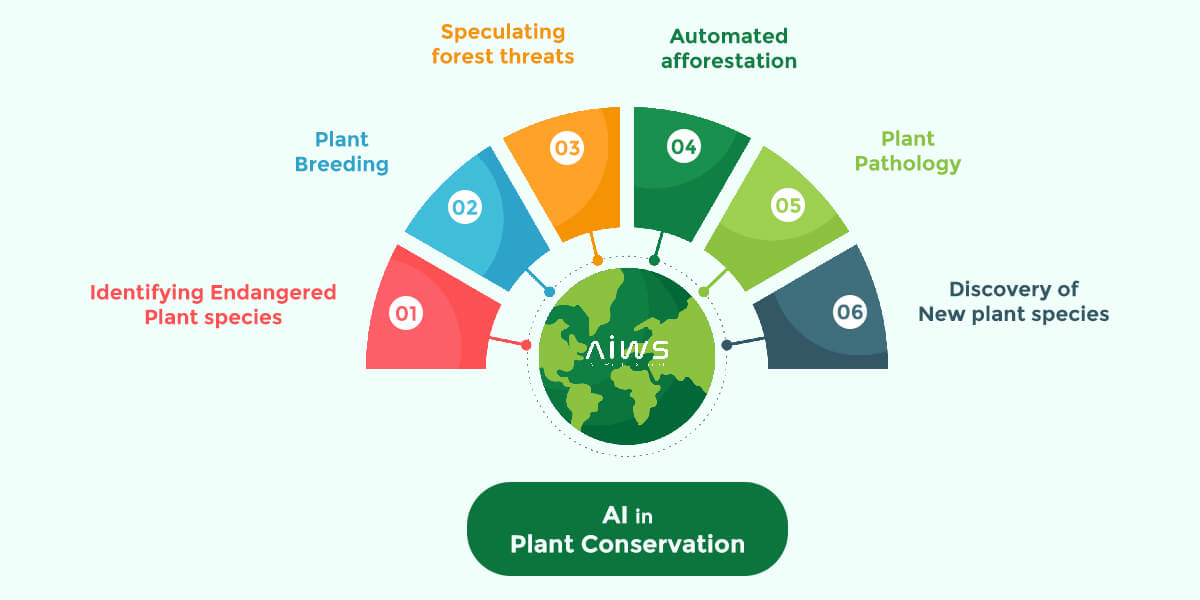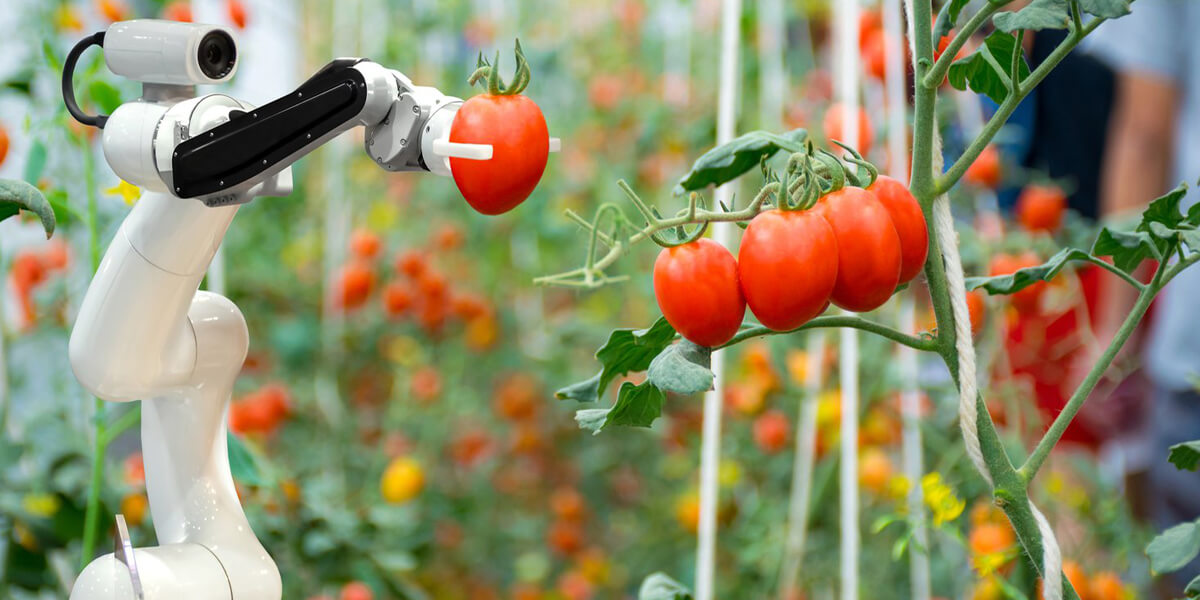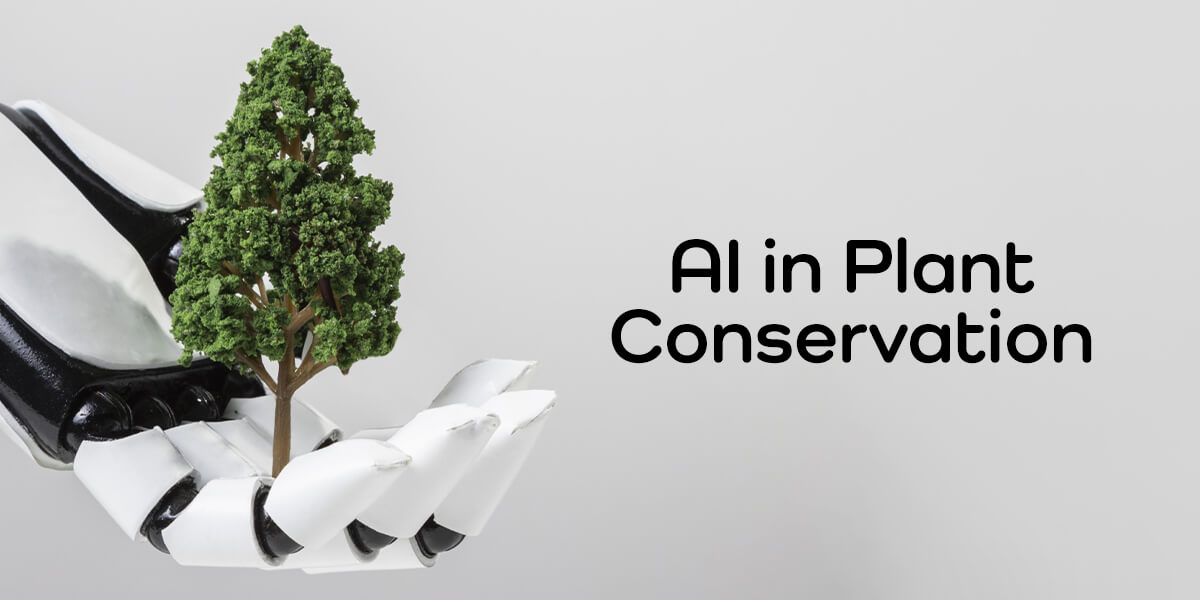Our planet is undergoing change continuously. Many human activities are disrupting ecological balance and causing harm to biodiversity. Plants need to be protected as they create the basic habitat on which other species depend on. Plants help us in fulfilling the basic necessities, such as food, medicine, and shelter. Trees and forest coverage reduce harmful greenhouse gases and produce oxygen. The application of artificial intelligence can help scientists prevent the extinction of at-risk plant species and thus enable a strong ecosystem.
AI is capable of being deployed at the planetary scale. The problem to solve now is how we humans can continue to grow and prosper sustainably without destroying the very ecosystem that we depend on. AI facilitates the collection and processing of a huge amount of environmental data.
AI technology has the potential for the conservation of trees and plant species. Artificial intelligence provides the following opportunities to preserve the forests and plants:

1-Identifying Plant species at risk:
Scientists approximated that more than 20% of plants are vulnerable to extinction. Artificial intelligence is making it possible for researchers to spot endangered plant species in remote locations and classify them.
-
A multi-institutional research team used machine learning to anticipate the conservation status of 150,000 plant species. They design an algorithm to track plant location patterns, their forms and structures, habitat traits, and climatic patterns. AI helped researchers in analyzing the information and identifying plants on the verge of extinction.
2-AI in Plant Breeding:
Scientists are using artificial intelligence for changing the traits of plants and making them adaptable to changing environments. It can also help in improving the quality of nutrition in plants.
- Dan Jacobson, a computational biologist at Oak Ridge National Laboratory, is working on numerous projects of plant breeding and bioenergy with the help of AI. Jacobson and his team have developed a genomic selection algorithm that’s driven by artificial intelligence. It helps in identifying the suitable combination of genomes to create improved plants that can adjust to their environments.

Photo Credit: Shutterstock
3-Discovery of new plant species:
AI can be used to discover new plant species worldwide. Natural conservationists are harnessing the power of AI to collect data on a large scale in no time efficiently. AI-based autonomous systems assist in finding local flora in hard to reach locations on Earth.
- iNaturalist, an AI-based networking platform developed by the California Academy of Sciences and the National Geographic Society, helps uncover plants all around the world. Citizens can share their observations in real-time and create research quality data for scientists working to protect nature.
4-AI in plant disease detection:
Scientists are utilizing artificial intelligence models to detect disease and stress at a whole plant level before people could actually scout to see them.
- PlantVillage Nuru is an application developed by Penn State University using Google’s Tensorflow machine learning tool to monitor and diagnose plant diseases.

Photo Credit: PlantVillage
5-Anticipating and Detecting forest threats:
Researchers are leveraging artificial intelligence to detect and prevent forest fires sparked by falling trees that are near power stations and storms. It also helps in evaluating areas that are more at risk.
- AI startup Spacept and Omdena built a deep learning model that can identify trees with 95% accuracy and aids in preventing wildfires.
6-Automated afforestation:
Our planet has a capacity of around 1.2 million more trees. AI can be used to map locations for the establishment of a forest.
- Dendra systems, a UK based company, is finding ways to use artificial intelligence to restore the natural world. They are using an integrated approach to locate suitable sites for plantation, observe plant health, and analyze trends.
Key Inferences:
AI is helping humanity solve the unsolvable problems of protecting our forests and endangered plant species by creating algorithms. The bottom line is if we want to live on a healthy planet that provides a prosperous future for all of us, then we need to precisely take advantage of artificial intelligence to save our planet.

